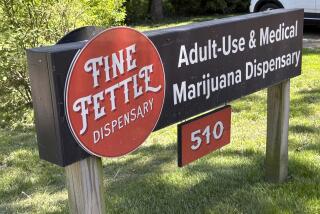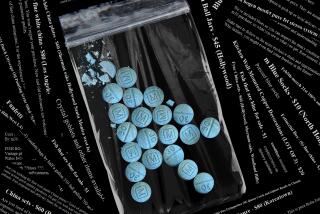Massive Blockade of N.Y. Harbor Yields No Drugs
NEW YORK — More than 250 federal and local law enforcement officials took to the seas Friday, boarding and searching nearly every boat and ship that entered New York’s harbor, in the latest battle here in the war on drugs.
Like most of the highly publicized anti-drug operations here in recent weeks, however, Operation Glass Eye, the Coast Guard’s partial blockade of one of the world’s largest and busiest harbors, produced few apparent results.
Coast Guard teams clad in bulletproof vests and armed with shotguns and M-16 automatic weapons found no drugs on any of the first 90 pleasure boats, fishing craft, tugs, barges, sightseeing craft, freighters and other ships they stopped and boarded.
One member of a fishing boat crew was arrested after a police computer search showed that he was wanted on a fugitive warrant for armed robbery in New Jersey. And a pleasure boat was cited for failing to carry emergency flares.
The Coast Guard, which coordinated the operation with the New York Police Department, the U.S. Drug Enforcement Administration and the U.S. Customs Service, nonetheless pronounced the anti-drug operation a success.
“For those who would poison the children of the United States, the message is clear: We’re going to get you,” said Coast Guart Capt. Gene Henn, who commanded the operation. “He who runs drugs into the port of New York runs a high risk of getting caught.”
‘Can Stop Anyone’
“We believe it’s a success because we believe we have shown people we can work together, and, if need be, can stop anyone who comes into New York harbor,” Coast Guard spokesman Loren Bullard added.
Others were less sanguine. New York Mayor Edward I. Koch said that widespread publicity during the day had resulted in “a poorly performed maneuver.” He added: “In the future, let’s hope they have better security.”
Norman Siegel, executive director of the New York Civil Liberties Union, said the indiscriminate searching of ships violates the traditional Fourth Amendment protection against search and seizure.
“It’s grandstanding, it’s histrionics, it’s theater,” Siegel said. “They want to appear on the 6 o’clock news like they’re doing something substantial. They’re not.”
Drug Traffic Unknown
New York harbor has not been known as a major port of entry for smuggled narcotics in the past. Coast Guard and DEA spokesmen said they had no estimates on the amount of drugs entering the harbor.
“We have a lot of drugs that come in the harbor, as well as in the airports and in vehicles,” DEA spokesman Robert Strang said. “We don’t have it broken down as to which is more prevalent.”
Starting at dusk Thursday, the officers used 15 Coast Guard vessels, four New York police boats, two U.S. Customs ships and six helicopters to stop vessels as they entered the harbor near the Verrazano Bridge. The ships were escorted to a Staten Island pier for boarding.
“It is the first time an attempt has been made to stop all traffic coming into New York,” Coast Guard spokesman Dale Puckett said. “It’s a big job.”
Police Draw Headlines
The blockade was set up a day after New York police drew headlines but made no arrests during raids on 224 shops selling so-called drug paraphernalia. Police squads confiscated nearly 40,000 glass pipes that they said could be used to smoke the highly addictive cocaine derivative known as crack.
The pipes were confiscated under a state public health law that allows equipment intended for use with a controlled substance to be seized, police said. Officials say use of crack and cocaine has replaced heroin as the city’s largest and most dangerous drug problem.
Last week, Gov. Mario M. Cuomo proposed legislation under which anyone convicted of selling a minimum of three vials of crack, worth about $50, could be sentenced to up to life in prison.
55 Vials for Felony
Critics, charging election-year politics, said that current state law already provides for up to 25 years in prison for selling crack. Despite the 25-year maximum, a study in Brooklyn found that convicted crack sellers are sentenced to an average of two to six years, with repeat offenders averaging four- to nine-year sentences. State laws on possession of the drug are much weaker. A suspect must be in possession of 55 vials of crack to be charged with a felony.
In a widely publicized undercover operation last month, Sen. Alfonse M. D’Amato (R-N.Y.) and U.S. Atty. Rudolph W. Giuliani donned sunglasses and dirty jackets to buy vials of crack from street dealers in upper Manhattan. Tests later showed that some of the crack they purchased was phony.
More to Read
Sign up for Essential California
The most important California stories and recommendations in your inbox every morning.
You may occasionally receive promotional content from the Los Angeles Times.











